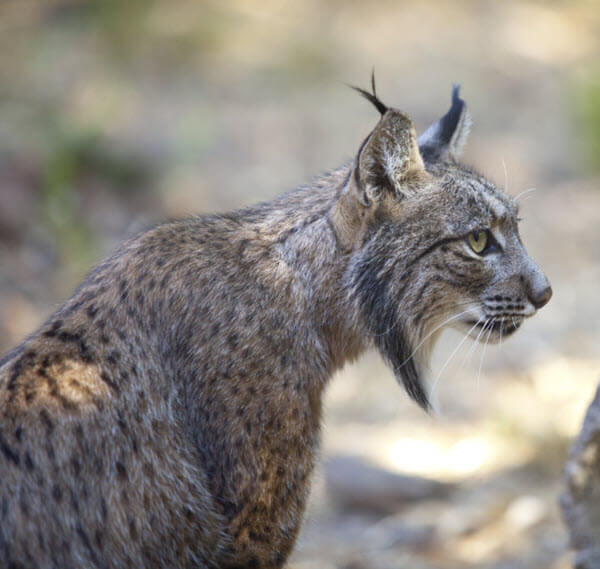The Iberian lynx (Lynx pardinus) is an endangered wild cat that can be found in increasingly small numbers on the Iberian Peninsula. The Iberian lynx population is decreasing due to the loss of its primary prey, rabbits, as well as habitat loss. Until recently, some conservationists consider the Iberian lynx the most endangered of all wild cats.
Scientific Name: Lynx pardinus
Conservation Status: Endangered
Physical Characteristics
The fur of the Iberian lynx ranges for tawny to yellow. The coat is spotted and the fur is short. The cat also has a short body and tail, however its legs are long. The head of the Iberian lynx is relatively small, with tufted ears and long whiskers.
| Iberian Lynx | FROM | TO |
| Weight | 15 lbs. | 35 lbs. |
| Body Length | 29.4 in. | 32.3 in. |
| Tail Length | 4.9 in. | 6.3 in. |
Habitat (Where the Iberian Lynx Lives)
The Iberian lynx has lost more than 80% of its range. By the 1990s, there were only two small populations of Iberian lynx living on the peninsula, one in Montes de Toledo and the other in Sierra Morena. The cat is typically found in grasslands and areas with dense shrubs.
Hunting and Prey (Diet)
Iberian lynx primarily feed on rabbits, but can also eat rodents, partridge, deer, moufon (wild sheep) and ducks. A lynx will stalk its prey and then wait behind rocks and bushes before pouncing.
Reproduction and Lifespan
The gestation period is approximately 60 days, with kittens born between March and September. Litters consist of one to three kittens who become independent at around 7 to 10 months old. They will however, stay with their mother until almost two years of age. There is frequent inbreeding due to the small size of the population.
Conservation Threats
Aggressive conservation and reintroduction programs have been implemented to prevent Iberian lynx extinction. Projects include restoration of the cat’s native habit, captive breeding and release, and rabbit population management. The cat is fully protect and can no longer be hunted.

